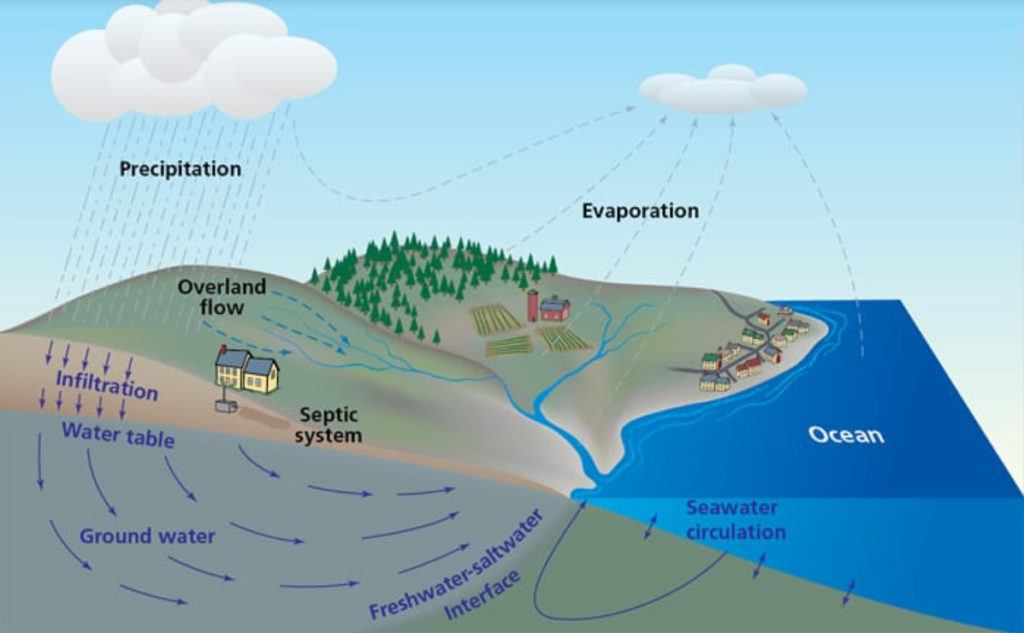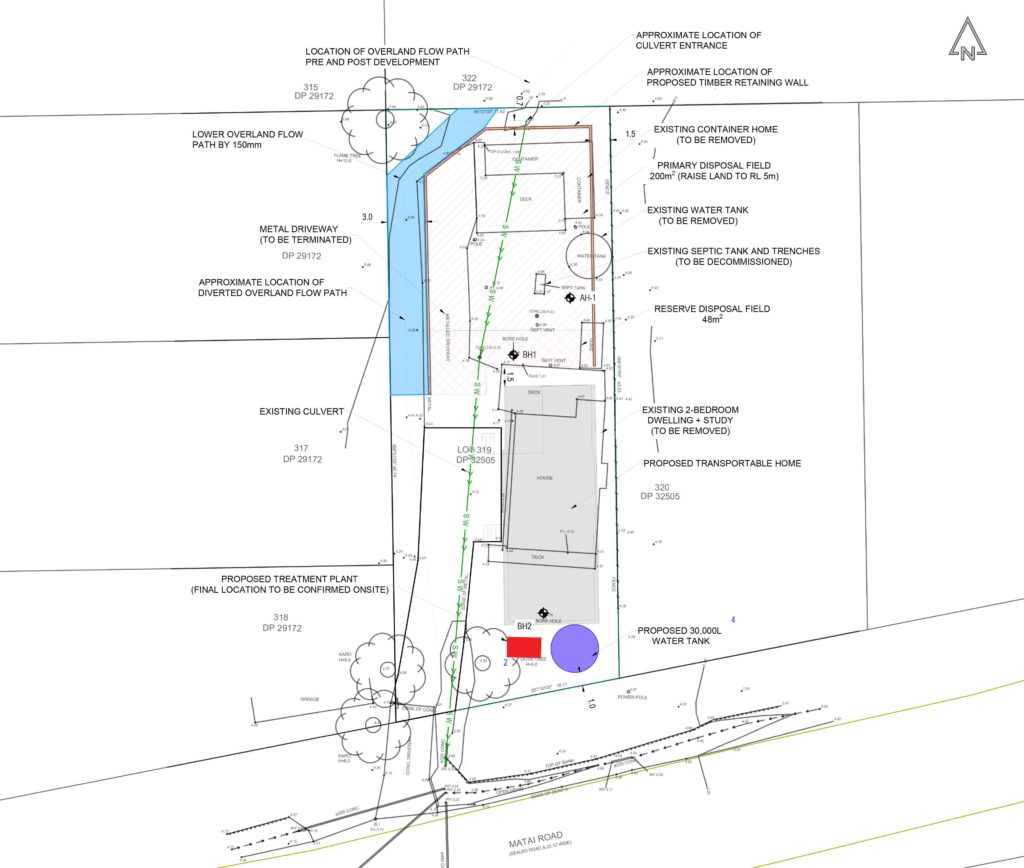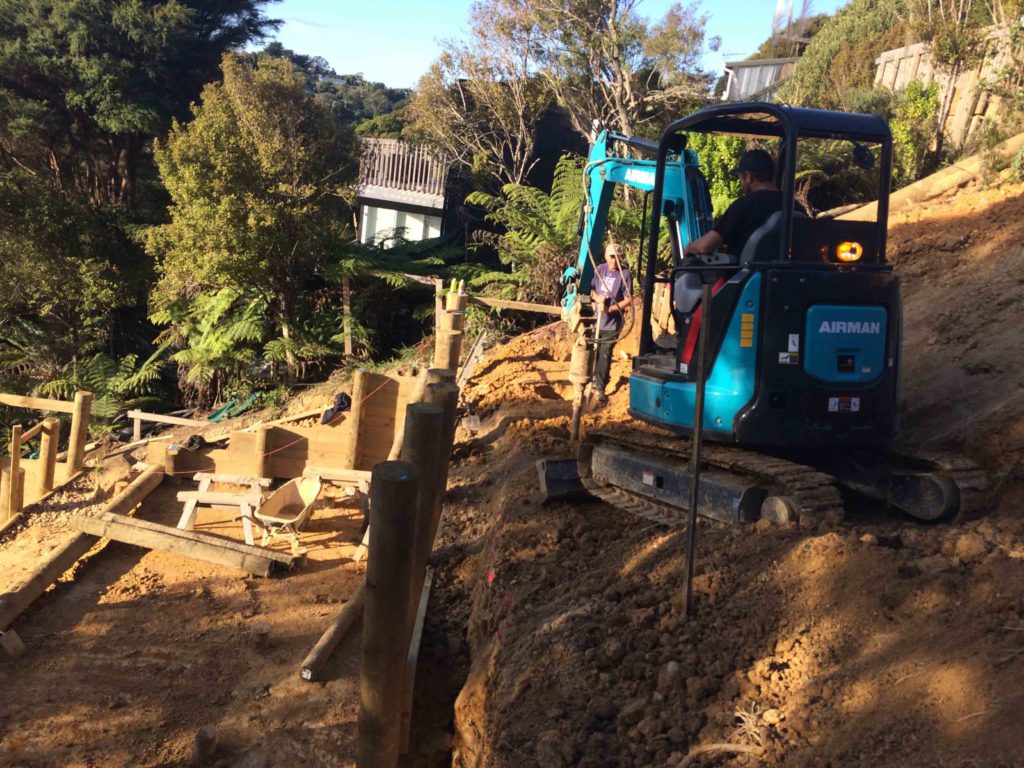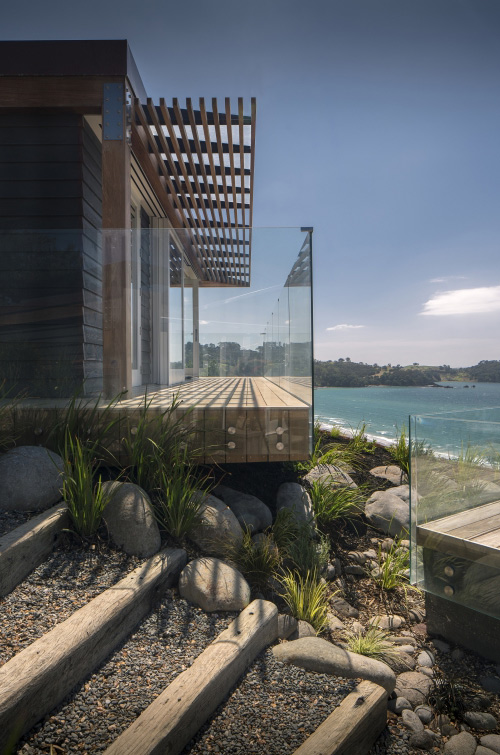Your #1 consideration should be water and how you manage it.
As islanders, we hopefully all have an appreciation of how lucky we are. And as a result, many of us aspire to be more sustainable in our everyday lives. We feel a sense of responsibility, even guardianship, towards our little plot of paradise. To conserve our environmental balance, we all must take responsibility and tread lightly on this Earth. So when planning a new home on Waiheke it is important to first consider the natural environment in which you are building, and how you might minimise your local impact.
The fragile Water Cycle on Waiheke
The home you are considering must not only address your dreams but also be in step with the environmental aspirations of your neighbours and community. It must help protect the environment you cherish, keep the beaches safe for swimming and help to avoid uncomfortable water shortages. Who wants to line up at a standpipe in another street in the middle of summer with a 20L jerrycan to get sufficient water just for the essentials, day after day? The natural water cycle describes the interaction between rainfall, what happens when rainfall hits the ground (run-off, evaporation and infiltration into the ground) and how run-off, and the delayed response of infiltration, combine to form streams that reach the sea. This is the point where evaporation occurs and forms clouds that produce rain that falls back on the land.

It is important to understand the water cycle when building your home and providing the support infrastructure to make life comfortable since Waiheke does not have a piped water supply or a wastewater collection system.
Collecting Water for Domestic use
Your dream home will interrupt the natural water cycle with rainfall now landing on your home and garage roof. These impervious surfaces are the harvesting areas for your water supply system. Thought on how this water is collected and how much you collect is essential when planning your development. Unfortunately, rainfall is not consistent during the year nor is it consistent between years. Extended dry periods and droughts are fairly common on Waiheke. An understanding of hydrology is important when making decisions on how much water storage to provide. It can reduce the uncertainty of whether you can have a shower at the end of a long, hot summer day, or not!
Planning for Flood Waters
It is, of course, possible to have summer downpours and we all celebrate having the tanks full again. But sometimes the harvested rainfall can exceed the capacity of the tanks and we need to safely discharge the tank overflow to where it can irrigate garden and lawn areas and recharge the groundwater. This area should be separate from where we irrigate treated wastewater as we do not want to cause a breakout from the effluent disposal field and cause a nuisance to neighbours. Conversely, in wintertime when the water tanks are full and the soils across the property are close to saturation, we need to think of how we safely dispose of the overflow without causing environmental damage. Piped overflows can scour the land and cause soil erosion. Sediments carried away by the discharge can silt up watercourses and eventually end up at the coastline. Providing locations and designing stormwater management devices, where the flow of excess rainfall can be slowed and partially detained, will reduce the intensity of overland flows and high water levels in watercourses that lead to erosion.

Taking a holistic approach
We all want easy access to sufficient potable water to make our lives comfortable. But we should also have a conservation ethic that stops us being wasteful with this precious resource. This is why the clever design of your plumbing system and the correct selection of water-saving fixtures (showerheads, toilets, taps and washing machines) minimises water use while at the same time providing for all your needs. A site-specific water balance study for your development will help you decide on the volume of potable water storage required versus the unpredictability of experiencing water shortages in the future.
The consequential, beneficial effect of minimised water usage is the reduced amount of wastewater that is piped away from the house to your onsite wastewater treatment plant and irrigation system.
The less water used the smaller the wastewater system needs to be.
Wastewater volumes are generally determined by a rule of thumb method based on the number of beds in the house. But volumes can be exceeded during summertime when your city friends and family come to stay! This additional volume can be detrimental to the operation of the wastewater system and lead to partially treated effluent being discharged to the environment causing issues in local watercourses or even further afield.
Auckland Unitary Plan
You will need to understand the Auckland Unitary Plan rules that apply to your development and the options that are available to treat your wastewater and dispose of it on-site. Compliance will depend on the size of the site, level of treatment required, the soil types in the proposed disposal area, type of disposal system and the methods of mitigating any negative effects of the discharge. Once you have determined the volume of wastewater to be discharged you will need to carry out a subsoil investigation of that part of the site set aside for irrigating the treated effluent. The purpose of the investigation is to understand the rate at which the treated wastewater can be safely infiltrated into the ground over a 24 hour period and hence the actual area required.

Get a Site Assessment
A site-specific wastewater treatment and disposal assessment will help you determine the type of treatment system, the size and location of the treatment plant and the best location for the effluent disposal field.
Managing Stormwater
Building your dream home and the driveway to it will change the impervious area of your site and increase the potential stormwater run-off during periods of heavy rain. Managing this run-off is vital to avoid localised flooding and creating areas of land instability.
Aim for neutrality
You will need to build stormwater management devices on-site that hold back stormwater and slowly release it to prevent downstream flooding. This method of managing stormwater mimics our natural processes and is called stormwater neutrality. Which is to say that the effects of your development on the stormwater system are no different from the pre-development state of your site. A site-specific stormwater management plan will be required to demonstrate that your development is able to achieve stormwater neutrality.

The three components of water management will need to be addressed to demonstrate, separately and collectively, compliance with the Auckland Unitary Plan rules to enable Council to grant consent for your development.
Special Offer
For the month of June, we are offering all Weekender readers the opportunity to receive a free 1 hour consultation. Simply call our Waiheke office and we’ll take a look at your site/plans and offer some no-obligation guidance – a free second opinion perhaps. You have nothing to lose and the island has everything to gain. For specialist, locally-based help with water, wastewater and stormwater planning, call Gareth on 09 3722422